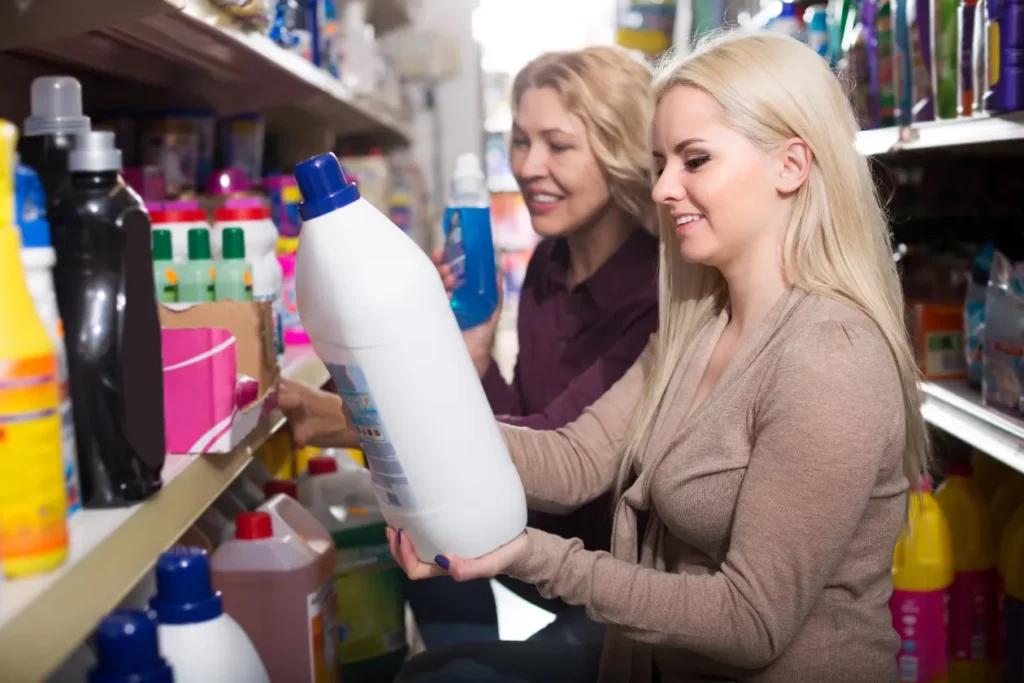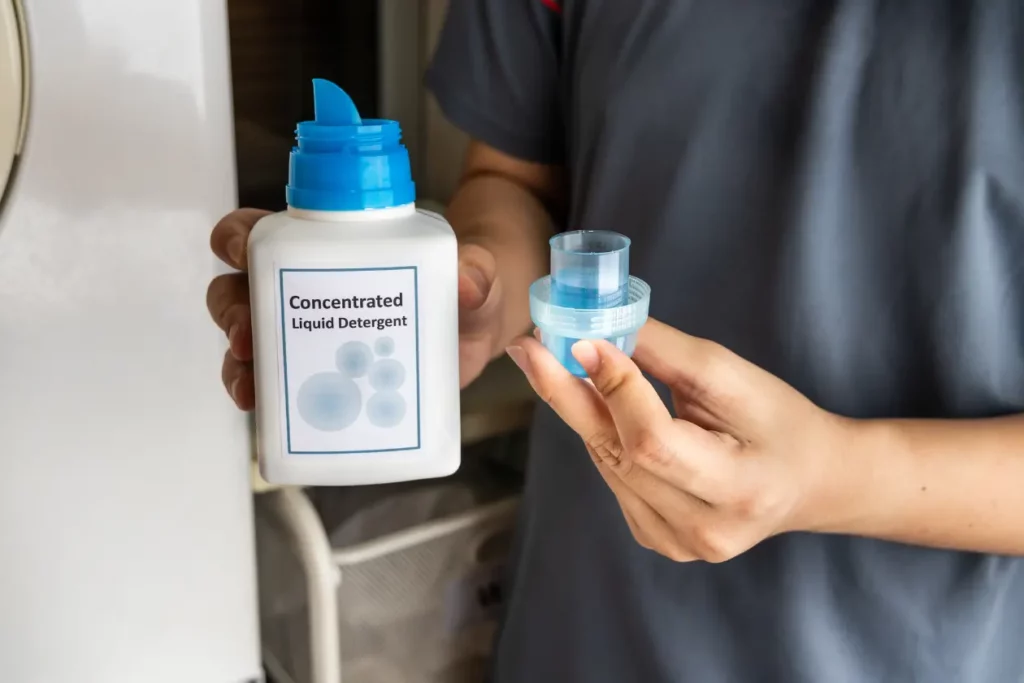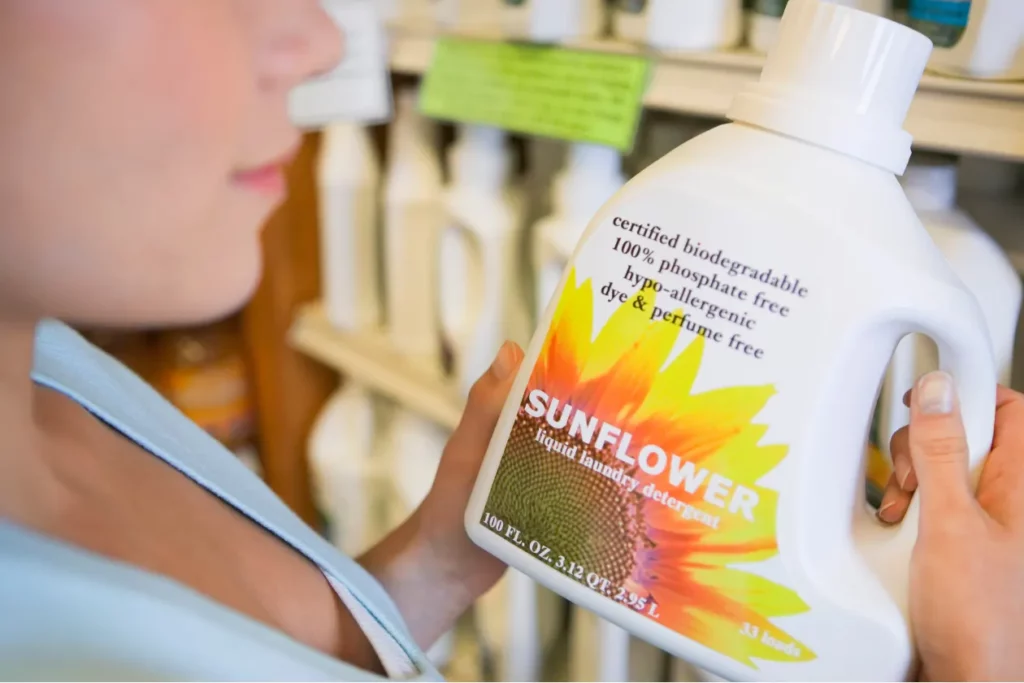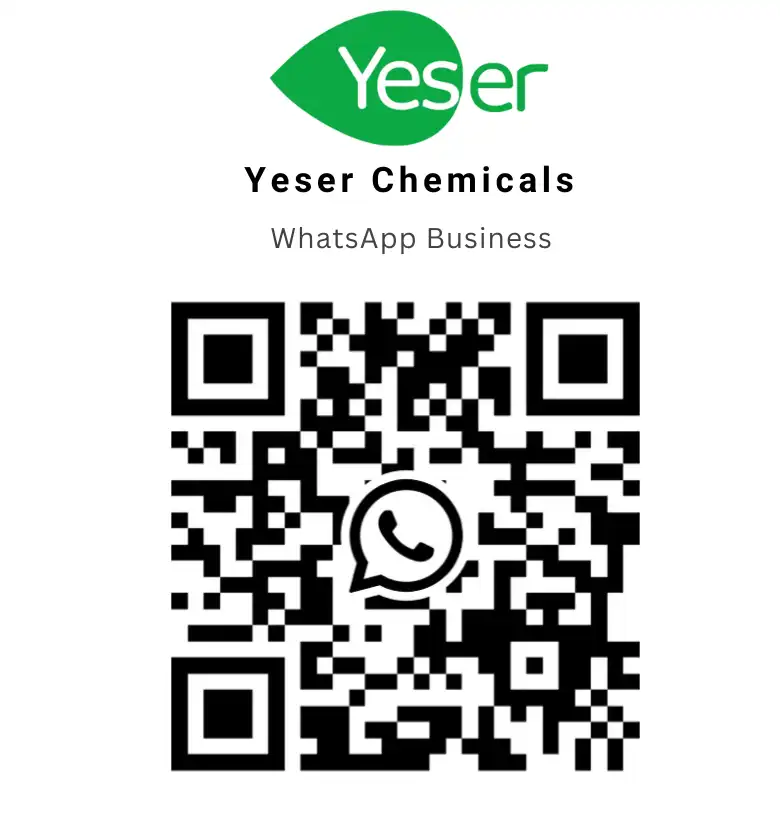Introduction
Laundry liquid detergents have revolutionized the way we clean our clothes, offering convenience, performance, and ease of use. For industry insiders, mastering the formulation of liquid detergents is essential for producing high-quality products that meet customer expectations and comply with stringent regulations. This comprehensive guide provides insights into the essential components, functional ingredients, innovative developments, and market trends for liquid detergent formulations.
The Basic Science Behind Liquid Detergent Formulation – Ingredients and Their Roles
Laundry detergent liquid formulation is an intricate process that merges chemistry, biology, and physics principles. The goal is to create a product that effectively cleans clothing, offers convenience and ease of use, and addresses various fabric and stain concerns. In this section, we will explore the essential components that make up a typical laundry detergent liquid and discuss their specific roles and functions.
The following table provides a comprehensive overview of the common ingredients found in laundry detergent liquids and their respective roles. By understanding the functions of each component and how they interact with one another, industry insiders can better design innovative and high-performance laundry detergent liquid formulations that cater to consumer needs and adhere to regulatory standards.
| Ingredient | Function | Common Options | Weight ratio, % (By active content) |
|---|---|---|---|
| Primary surfactants | Foaming, cleansing | Sodium Lauryl Sulfate (SLS) Sodium Laureth Sulfate (SLES) Alkyl Benzene Sulfonate (LAS) | 10-20 |
| Secondary surfactants | Detergency, foaming, wetting | Fatty Alcohol Polyoxyethylene Ether(AEO) Cocamide DEA(CDEA) Cocamidopropyl Betaine(CAPB) Cocamidopropylamine Oxide(CAO) Alkyl Polyglucoside (APG) | 2-8 |
| Chelating agents | Preventing metal ion interference | Ethylenediaminetetraacetic Acid (EDTA) | 0.1-1 |
| Enzymes | Targeted stain removal | Proteases | 0.5-3 |
| Defoamers | Preventing excessive foaming | Silicone-based antifoaming agents | 0.05-1 |
| Builder | Enhancing detergent performance | Sodium Carbonate Sodium Silicate Sodium Polyacrylate | 1-10 |
| Buffers & pH regulators | Controlling pH | Sodium Hydroxide Citric Acid | 0.1-1 |
| Optical brighteners | Enhancing color brightness | Tinopal CBS-X | 0.1-1 |
| Colorants | Providing color | Dyes: Direct, Acid, and Basic Pigments | 0.001-1 |
| Fragrances | Providing scent | Essential oils Synthetic fragrances | 0.1-1 |
| Preservatives | Preventing microbial growth | Benzisothiazolinone (BIT) Methylisothiazolinone (MIT) Sorbic Acid Sodium Benzoate | q.s. |
| Thickeners | Viscosity building | Salt Acrylates Copolymer Cellulose Derivatives Amides | 0.1-3 |
| Deionized Water | Solvent, Carrier | Deionized Water | q.s. to 100% |

Essential Ingredients in Laundry Detergent Liquid Formulation
- Primary Surfactants: These are the core active ingredients in laundry detergent liquids that play a crucial role in foaming and cleansing. Some common primary surfactants include Sodium Lauryl Sulfate (SLS), Sodium Laureth Sulfate (SLES), and Alkyl Benzene Sulfonate (LABSA). These surfactants work by reducing the surface tension of water, enabling it to spread and penetrate the fabric more effectively. They also help lift and remove dirt, oils, and stains from the fabric.
- Secondary Surfactants: These ingredients work alongside primary surfactants to enhance detergency, foaming, and wetting properties. Common secondary surfactants include Fatty Alcohol Polyoxyethylene Ether (AEO), Cocamide DEA (CDEA), Cocamidopropyl Betaine (CAPB), and Cocamidopropylamine Oxide (CAO). These surfactants provide additional cleaning power and can help stabilize foam and boost the overall performance of the detergent.
- Chelating Agents: These agents play a crucial role in preventing metal ion interference, which can impede detergent performance. Common chelating agents include Ethylenediaminetetraacetic Acid (EDTA), sodium gluconate, and Diethylenetriaminepentaacetic acid (DTPA). They work by binding to metal ions, such as calcium and magnesium, in hard water, rendering them inactive and improving the overall cleaning effectiveness of the detergent. Amongst, EDTA-2Na is the most commonly used one in liquid detergents.
- Enzymes: These proteins target specific stains and soils, breaking them down for more effective removal by the detergent’s surfactants. Proteases are a common enzyme used in laundry detergents to target protein-based stains like blood, egg, and grass. Other enzymes, such as amylases and lipases, target carbohydrates and fats, respectively.
- Builders: These ingredients enhance detergent performance by maintaining an alkaline pH, softening hard water, and preventing soil redeposition. Common builders include sodium citrate, sodium bicarbonate, and complex phosphates like sodium tripolyphosphate (STPP). By working in conjunction with surfactants, builders improve the overall cleaning efficiency of laundry detergent liquids.
- Bleaching Agents: These chemicals whiten and brighten fabrics by removing color from stains and soils. Common bleaching agents include hydrogen peroxide and sodium perborate. They work by oxidizing the organic materials within stains, making them more soluble and easier to remove.
- Optical Brighteners: These ingredients enhance color brightness by absorbing ultraviolet light and emitting visible light, creating the illusion of brighter and cleaner fabrics. Common optical brighteners include stilbene-based compounds, distyrylbiphenyl derivatives, and coumarin derivatives. The most commonly used optical brightener in liquid detergent is Tinopal CBS-X by BASF.
- Foam Control Agents: These agents, often silicone-based, reduce the foaming tendency of detergent solutions. Excessive foam can negatively impact cleaning performance by preventing effective contact between the detergent and the fabric. High-efficiency(HE) detergents for laundry in HE washers. AEO-9, which is commonly added into HE laundry detergent formulas as a secondary surfactant, also can serve as a defoaming agent.
- Fragrances, Colorants, and Preservatives: These ingredients enhance the presentation, appeal, and shelf life of laundry detergent liquids. Fragrances provide a pleasant scent, while colorants add visual appeal. Preservatives, such as benzisothiazolinone (BIT) and methylisothiazolinone (MIT), prevent microbial growth and extend product shelf life.
By understanding the roles of each component and their interactions, industry insiders can design innovative and high-performance laundry detergent liquid formulations that meet consumer needs and adhere to regulatory standards.
Practical Liquid Detergent Formulations
A. Common Standard Laundry Detergent Liquid Formula
Presenting a widely adopted standard laundry detergent liquid formula, this comprehensive list encompasses the vital ingredients along with their respective weight percentages and the role they play within the formulation. This carefully crafted combination of components ensures optimal performance, resulting in efficiently cleaned and refreshed laundry.
| Ingredient | Wt, % (as is) | Function |
|---|---|---|
| Caustic soda | 0.83% | Neutralizer |
| LABSA 96% | 6.2% | Primary Surfactant |
| SLES 70% | 9.0% | Primary Surfactant |
| CDEA 70% | 2.0% | Secondary Surfactant |
| AEO-9 | 1.0% | Secondary Surfactant |
| EDTA-2Na | 0.5% | Chelating agent |
| Fragrance, Dye, Preservatives | q.s. | Additives |
| Deionized water | q.s. to 100% | Solvent, Carrier |
| Salt (NaCl) | q.s. to achieve desired viscosity | Thickener |
| Citric acid | q.s. to achieve desired pH (7-8) | pH Adjuster |
In this standard formulation:
- Caustic soda serves as a neutralizer.
- LABSA and SLES are the primary surfactants for core cleaning and foaming properties.
- CDEA and AEO-9 function as secondary surfactants to enhance performance and stabilize foam.
- EDTA-2Na is used as a chelating agent to improve surfactant efficiency.
- Fragrance, dye, and preservatives are added for product aesthetics and shelf-life.
- Deionized water acts as a solvent and carrier for the ingredients.
- Salt (sodium chloride) is used as a thickener for desired viscosity.
- Citric acid adjusts the pH to an optimal range (7-8).

B. High-efficiency (HE) Laundry Detergent Liquid Formula
HE laundry detergents are specifically designed for use in high-efficiency washing machines that use less water. These formulations have reduced sudsing and are highly concentrated, delivering exceptional cleaning performance with smaller amounts of water and detergent.
Here is an example:
| Ingredient | Wt, % (as is) | Function |
|---|---|---|
| Caustic soda | 0.4% | Neutralizer |
| LABSA 96% | 3.0% | Primary Surfactant |
| SLES 70% | 10.0% | Primary Surfactant |
| CAB 35% | 10.0% | Secondary Surfactant |
| OP-10 | 4.0% | Secondary Surfactant |
| AEO-9 | 4.0% | Secondary Surfactant |
| EDTA-2Na | 0.2% | Chelating agent |
| Fragrance, Dye, Preservatives | q.s. | Additives |
| Deionized water | q.s. to 100% | Solvent, Carrier |
| Salt (NaCl) | q.s. to achieve desired viscosity | Thickener |
| Citric acid | q.s. to achieve the desired pH (7-8) | pH Adjuster |
In this formulation:
- LABSA and SLES function as primary surfactants, providing the core detergency and foaming properties.
- CAB, OP-10, and AEO-9 are secondary surfactants that enhance cleaning performance and foam control.
- Caustic soda (sodium hydroxide) neutralizes acids in the formulation.
- EDTA-2Na, a chelating agent, binds and stabilizes metal ions to improve surfactant efficiency.
- Fragrance, dye, and preservatives are added as per requirement to improve product aesthetics and shelf-life.
- Deionized water acts as a solvent and carrier for the detergent ingredients.
- Salt (sodium chloride) functions as a thickener to achieve the desired viscosity.
- Citric acid is used to adjust the pH of the formulation to an optimal range (7-8).

C. Economical Laundry Detergent Liquid Formula
Featuring an affordable yet effective blend of ingredients, this economical laundry detergent liquid formula provides an acceptable level of cleaning performance at a reduced cost, making it an ideal solution for consumers seeking a budget-friendly option for maintaining clean and fresh laundry.
| Ingredient | Wt, % (as is) | Function |
|---|---|---|
| Caustic soda | 0.2% | Neutralizer |
| LABSA 96% | 1.5% | Primary Surfactant |
| SLES 70% | 3.0% | Primary Surfactant |
| CDEA 70% | 1.0% | Secondary Surfactant |
| EDTA-2Na | 0.2% | Chelating agent |
| Fragrance, Dye, Preservatives | q.s. | Additives |
| Deionized water | q.s. to 100% | Solvent, Carrier |
| HPMC | 0.3% | Thickener |
| Salt (NaCl) | q.s. to achieve desired viscosity | Thickener |
| Citric acid | q.s. to achieve desired pH (7-8) | pH Adjuster |
In this economical formulation:
- Caustic soda neutralizes acids in the formulation.
- LABSA and SLES function as primary surfactants for core cleaning and foaming properties.
- CDEA acts as a secondary surfactant, enhancing performance and foam stabilization.
- EDTA-2Na performs as a chelating agent to improve surfactant efficiency.
- Fragrance, dye, and preservatives add aesthetics and shelf-life to the product.
- Deionized water acts as a solvent and carrier for the detergent ingredients.
- HPMC functions as a thickener to achieve the desired viscosity.
- Salt (sodium chloride) is also used as a thickener for desired viscosity.
- Citric acid adjusts the pH of the formulation to an optimal range (7-8).

D. Mild Laundry Detergent Liquid Formula for Sensitive Skin
Formulations intended for sensitive skin are free from known irritants, such as fragrances, dyes, and certain enzymes. These products prioritize gentle cleaning agents, hypoallergenic ingredients, and thorough rinsability to minimize the risk of skin irritation.
A Sensitive Skin Liquid Laundry Detergent Formula:
| Ingredient | Wt, % (as is) | Function |
|---|---|---|
| Alkyl Polyglucoside (APG) | 4% | Primary Surfactant |
| Sodium Cocoamphoacetate | 2% | Secondary Surfactant |
| Sodium Citrate | 3% | Builder, pH adjuster |
| Glycerin | 1.5% | Humectant, Mildness Enhancer |
| Protease Enzyme (non-proteolytic) | 0.3% | Stain and Soil Remover |
| Amylase Enzyme | 0.3% | Stain and Soil Remover |
| Sodium Gluconate | 0.8% | Chelating Agent |
| Aloe Vera Extract | 1% | Soothing Agent, Mildness Enhancer |
| Panthenol (Vitamin B5) | 0.5% | Fabric Softener, Mildness Enhancer |
| Deionized water | q.s. to 100% | Solvent, Carrier |
This Sensitive Skin Liquid Laundry Detergent Formula features:
- Alkyl Polyglucoside (APG) as a primary surfactant that provides gentle and effective cleaning performance.
- Sodium Cocoamphoacetate, which acts as a secondary surfactant and helps enhance the overall detergency while maintaining mildness.
- Sodium Citrate as a builder and pH adjuster, contributing to improved cleaning efficiency while ensuring a skin-friendly pH level.
- Glycerin serves as a humectant and enhances the mildness of the detergent.
- Protease (non-proteolytic) and Amylase enzymes for effective stain and soil removal without causing irritation.
- Sodium Gluconate as a biodegradable chelating agent, helping the detergent work more effectively in hard water conditions.
- Aloe Vera extract to add soothing properties and further enhance the mildness of the formula.
- Panthenol (Vitamin B5) functions as a fabric softener and provides an extra layer of mildness.
- Deionized water as the solvent and carrier for the detergent ingredients.

Developing Advanced Surfactants
A. Novel High-performance Anionic Surfactants
To improve the cleaning performance of liquid detergents, research is being conducted on developing novel high-performance anionic surfactants. These surfactants aim to deliver excellent cleaning efficacy, superior foaming properties, and high biodegradability.
B. Branched and Alkyl Polyglucoside Surfactants
Branched and alkyl polyglucoside surfactants are eco-friendly, nonionic surfactants derived from renewable resources. They exhibit low toxicity, excellent foaming, and superior cleaning performance, making them suitable for use in green and eco-friendly liquid detergent formulations.
C. Biodegradable Surfactants
As environmental concerns continue to grow, the demand for biodegradable surfactants has increased. Industry insiders are constantly researching and developing new biodegradable surfactants to minimize the environmental impact of liquid detergents and comply with stringent regulations.
Innovations in Enzymes and Biotechnology
A. Proteases and Lipases for Improved Cleaning
Innovations in enzymes have led to the development of new proteases and lipases with improved cleaning performance. These enzymes provide enhanced stain removal, better fabric care, and reduced environmental impact when incorporated into liquid detergent formulations.
B. Engineered Enzymes for Enhanced Performance
Biotechnology advancements have allowed for the development of engineered enzymes with enhanced performance characteristics. These enzymes provide improved temperature and pH stability, substrate specificity, and resistance to inhibition by detergents, leading to superior cleaning performance.
C. Enzymes for Cold Water Washing
As energy conservation becomes a global concern, industry insiders are working on developing enzymes that maintain their activity and performance in cold water washing conditions. Undertaking this would lead to reduced energy consumption and significant cost savings for the consumer.
Optimal pH and Buffer Systems in Liquid Detergents
The pH value and buffering capacity of a liquid detergent play a crucial role in its overall cleaning performance. Most liquid detergents are alkaline, with a pH range of 7 to 11, as alkaline conditions promote the solubilization of soils and enhance the effectiveness of enzymes and surfactants. Buffer systems are employed to maintain this optimal pH and resist changes during product storage and use. Common buffering agents include sodium carbonate, sodium bicarbonate, and sodium citrate.
Regulatory and Compliance Requirements
A. Environmental Regulations
Environmental regulations govern the use of certain chemicals, the biodegradability of surfactants, and the incorporation of phosphates in detergent formulations. Industry insiders must stay abreast of these regulations to ensure their products comply with environmental guidelines and minimize the ecological impact.
B. Safety Testing and Labeling
Liquid detergents must undergo rigorous safety testing to establish their potential risk to human health and the environment. Proper labeling is mandatory to communicate hazards, precautions, and usage instructions to the consumer. Regulatory compliance must be maintained for all aspects of safety testing and labeling.
C. Ingredient Restriction and Bans
Certain ingredients, such as phosphates, nonylphenol ethoxylates (NPEs), and some optical brighteners, are either restricted or banned in specific regions due to their environmental impact. Industry insiders must be mindful of these restrictions and develop formulations that do not rely on harmful or restricted ingredients.
Optimization and Cost Control in Formulation
A. Ingredient Selection and Sourcing
Sourcing high-quality, competitively priced raw materials is essential for optimizing and controlling costs in liquid detergent formulations. Identifying reliable suppliers, negotiating contracts, and maintaining a balance between cost and quality are crucial aspects of ingredient sourcing.
B. Production Efficiency
Efficient production processes lead to reduced waste, lower energy consumption, and optimized output. Industry insiders must focus on improving production efficiency through technology, process control, and workforce training to manage costs effectively.
C. Packaging and Presentation
Packaging plays a crucial role in product attractiveness, usability, and environmental impact. Selecting appropriate, cost-effective packaging materials and design elements can improve consumer appeal, reduce packaging waste, and drive down overall production costs.
Market Trends and Future Challenges
A. Personalization and Customization
As consumers increasingly demand personalized products, the liquid detergent industry must adapt to accommodate this trend. Customized formulations tailored to individual needs, preferences, and specific washing machine requirements can provide a competitive edge in the market.
B. Sustainable and Green Formulations
The demand for sustainable and eco-friendly liquid detergents continues to grow. Industry insiders must prioritize the use of renewable resources, biodegradable ingredients, and sustainable packaging solutions to meet consumer expectations and comply with stringent environmental regulations.
C. Integrating with Smart Home Technologies
The rise of smart home technologies presents new opportunities to connect liquid detergent formulations with intelligent washing machines for optimized performance and efficiency. Industry insiders will need to develop products compatible with these technologies, offering tailored formulations, dosage recommendations, and performance tracking.
Conclusion: The Future of Liquid Detergent Formulation
As the landscape of the laundry detergent sector continues to transform, it is crucial for industry professionals to excel in liquid detergent formulation. The creation of high-performance, environmentally friendly, and inventive products that adhere to regulations and satisfy consumer demands will propel the evolution of liquid detergent formulation. By keeping abreast of market trends, surfactant innovations, enzyme advancements, and biotechnological progress, industry insiders can stay ahead in this rapidly changing and competitive field.
Frequently Asked Questions
1. What are the essential components of a laundry detergent liquid formulation?
The essential components of a laundry detergent liquid formulation include primary and secondary surfactants, chelating agents, enzymes, builders, bleaching agents, optical brighteners, foam control agents, fragrances, colorants, and preservatives. Each of these components plays a specific role in the overall effectiveness of the detergent.
2. What are the different types of surfactants used in laundry detergent liquid formulation?
The surfactants used in laundry detergent liquid formulation can be primary or secondary. Primary surfactants, such as Sodium Lauryl Sulfate (SLS), Sodium Laureth Sulfate (SLES), and Alkyl Benzene Sulfonate (LABSA), are the core active ingredients that play a crucial role in foaming and cleansing. Secondary surfactants, like Fatty Alcohol Polyoxyethylene Ether (AEO), Cocamide DEA (CDEA), Cocamidopropyl Betaine (CAPB), and Cocamidopropylamine Oxide (CAO), work alongside primary surfactants to enhance detergency, foaming, and wetting properties.
3. How are enzymes used in laundry detergent liquid formulation?
Enzymes are proteins that target specific stains and soils, breaking them down for more effective removal by the detergent’s surfactants. Proteases are a common enzyme used in laundry detergents to target protein-based stains like blood, egg, and grass. Other enzymes, such as amylases and lipases, target carbohydrates and fats, respectively.
4. What are the considerations for formulating laundry detergents for sensitive skin?
Formulations intended for sensitive skin are free from known irritants, such as fragrances, dyes, and certain enzymes. These products prioritize gentle cleaning agents, hypoallergenic ingredients, and thorough rinsability to minimize the risk of skin irritation.
5. What are the future trends and challenges in the field of laundry detergent liquid formulation?
Future trends in the field of laundry detergent liquid formulation include personalization and customization of products, sustainable and green formulations, and integration with smart home technologies. Challenges include adhering to environmental regulations, safety testing and labeling, ingredient restriction and bans, and cost control in the formulation.






